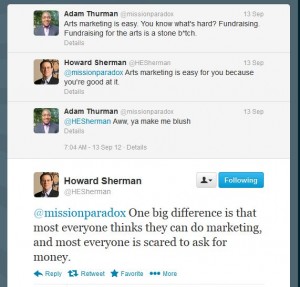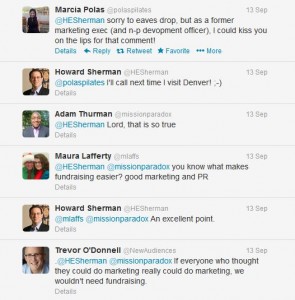The annual program review is a process we go through at the college both to provide evidence for our accreditation and to measure the general effectiveness of the programs in order meet organizational goals. This process helps the school identify “gatekeeper courses.”
Some colleges and universities use gatekeeper courses to weed students out of certain degree programs by making it very difficult to pass.
For our purposes, the designation is used to indicate courses possessing some characteristic which makes it very difficult for students to acquire basic skills. Make no mistake, the professors will bridle at any suggestion that the standards be lowered in any manner.
Often the solution lies in things like re-ordering the sequence in which concepts are introduced so that the class builds knowledge toward a complex concept in a different manner or perhaps providing hands on demonstration of the complex concept. There are many strategies one can use.
In the arts we talk about very much the same thing when we speak of removing barriers to entry for audiences. We look for alternative ways to communicate, allow people to purchase tickets, find parking, etc–anything that facilitates the decision to attend and makes the experience of doing so more pleasant.
There are many aspects of the process an arts organization can’t and won’t compromise, but there are alternatives the organization can pursue or implement. For example, people may have to pay for parking, but the performing arts center can arrange to paint a distinctive logo on the columns of the municipal parking garage as a signal to patrons the best side of the building to park reach the lobby.
During our preparations for the accreditation site visit, I realized there are many aspects of an organization’s operation that can constitute a “gatekeeper” preventing full participation of all the groups you hope to serve and even hamper the effectiveness of the organization itself.
The organization may pride itself on its accessibility to the public but there may be portions of the art class registration process which you see as helping you collect data for your grants which cause segments of the community you are eager to serve to opt out of participation.
You may view the procurement process you have instituted as central to your attempt to control spending but your staff may see it so onerous it constitutes a disincentive to suggest and develop new programs and as a result, your organization is viewed as staid and unresponsive to changing times.
I have talked many times about marketing being the responsibility of everyone in the organization and that everyone needs to feel like what they do is contributing to the success of the organization and its mission.
But I think it is very easy for departments not in direct contact with those identified as the prime constituency -performers, students, audience members, gift shop customers, etc to feel divorced from the mission.
Human resources may say “we hire the people that make our audiences happy” but sees their purpose as making sure no one exposes the organization to any sort of liability, causing employees to be perpetually anxious.
The business office may say “we help acquire the resources to create the stuff of which dreams are made…” but view their mandate as not allowing the idealistic artistic staff to spend too much money.
Just like with the gatekeeper courses, no one would advocate that staff not be fully trained about sexual harassment and limits of labor laws or that purchasing practices not be properly documented and monitored. However, it is worthwhile to evaluate what parts of your practice are impeding the pursuit of the mission.
Can the material in the employee training program be communicated and reinforced in a different manner than a video at orientation and dire lectures on sexual harassment scenarios? If people are having a hard time remembering purchasing subcodes, is there a better way to organize and list the codes? Or maybe the codes should be an intuitive alphanumeric sequence instead of an incomprehensible series of numbers?
Most importantly is how that department defines their relationship to the overall mission. A change in philosophy will lead to the type of changes I mention. I read an example of this, I think it was in Peter Drucker’s Managing the Nonprofit Organization, about two state social service offices. One got much higher satisfaction ratings than the other because it started from a place where it saw itself as helping people access services while the other saw its role as denying services people weren’t entitled to.
Even if the first office had a lower standard for awarding benefits to clients than the second, but I don’t think an organization has to necessarily compromise the rigor of its standards to engender a sense of satisfaction from others. My choice of the phrase “started from a place…” was intentional.
The context from which you start reframes the whole experience for both the employee and customer even if the final answer is “No.” It isn’t that everyone feels happier because the interaction started on a positive note. Rather, decisions were made long before that customer arrived that effected changes to the physical environment and procedures the office felt were necessary to meeting its perceived mission.
Visitors to both offices might have to fill out Form 46B, but the visitor to the former one might understand the necessity and feel generally optimistic about the outcome, while a visitor to the latter may perceive it as yet another test of their worthiness based on capricious standards.
I have strayed a little bit back toward customer service with this example. But I really want to advocate for looking inward at the company policies and procedures that might be acting as gatekeepers and making employees jobs difficult.
I think arts organizations are generally cognizant of the importance of providing good customer service, even if they aren’t doing it well. Internal evaluation doesn’t happen as frequently and admittedly the true source of problems can be difficult to identify. In the classroom, test scores give a pretty good indication that something is wrong.
It is harder to recognize that inefficient delays in the production department can be solved by providing staff with a company credit card with daily spending limits–a move that empowers the technical staff to acquire minor resources so they can continue working while assuaging the business office’s fears of uncontrollable cost overruns.




"Though while the author wishes they could buy it in Walmart..." Who is "they"? The kids? The author? Something else?…